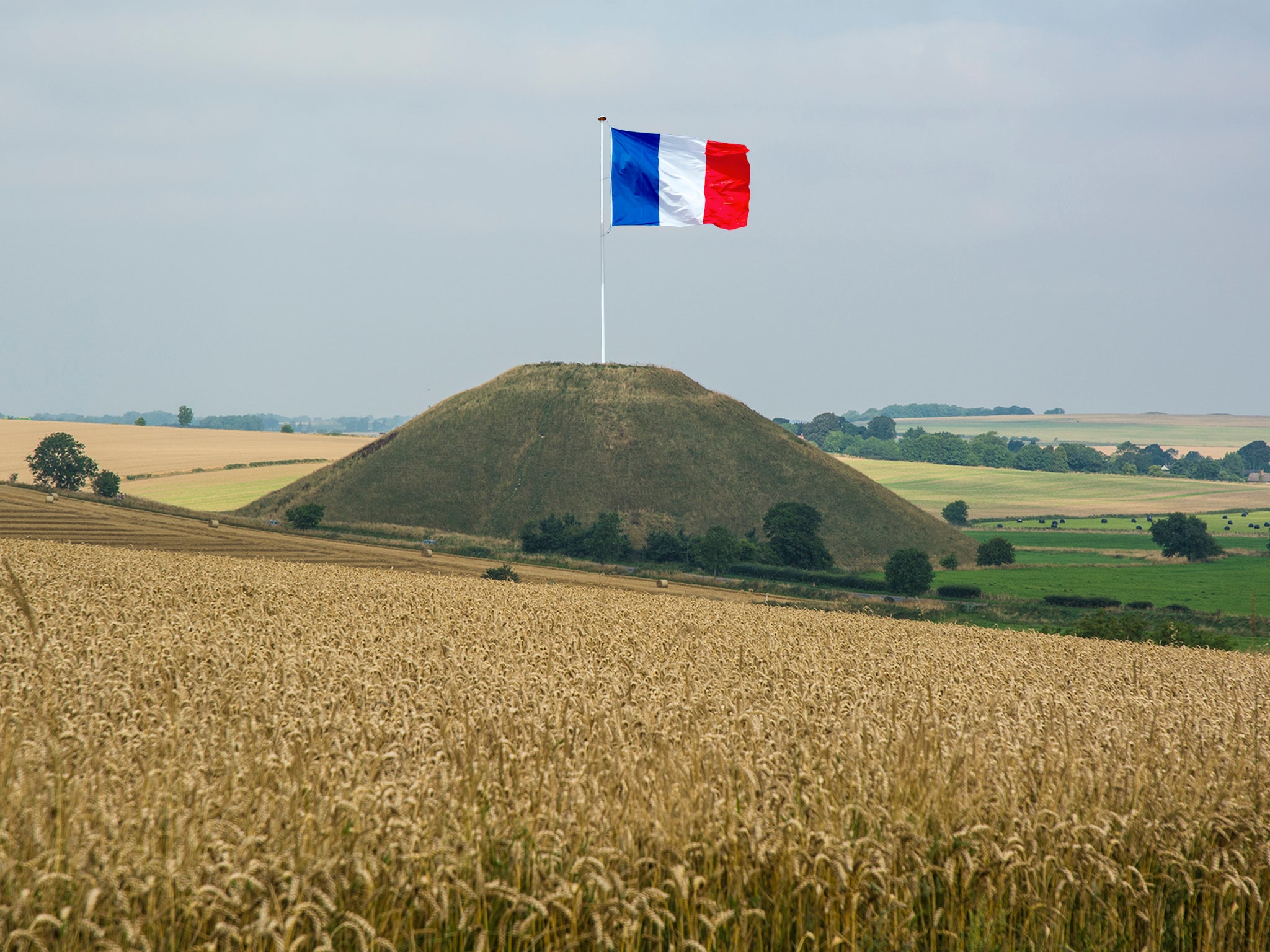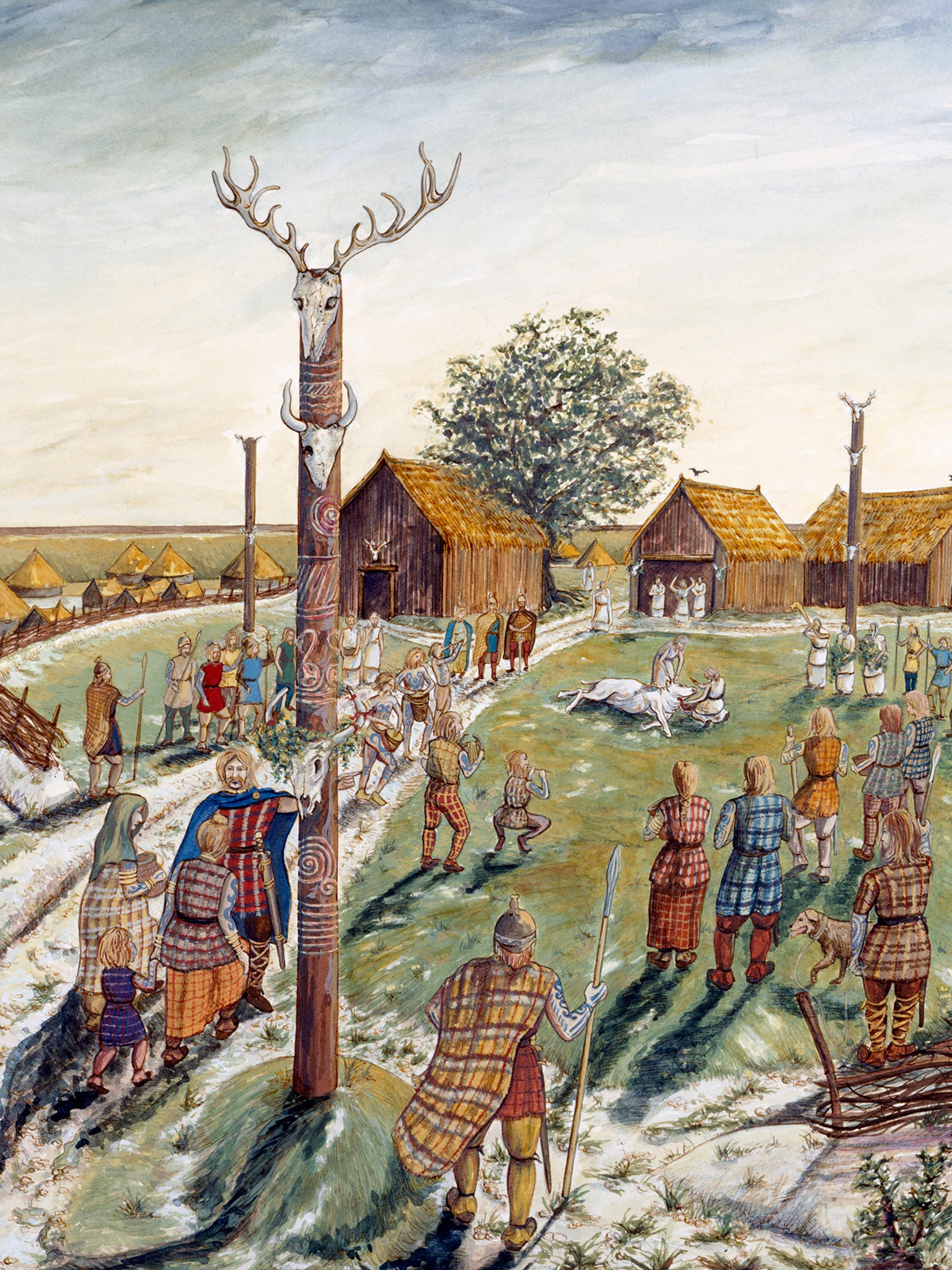The Independent's journalism is supported by our readers. When you purchase through links on our site, we may earn commission.
Where did Britain get half its genes from? France...
No doubt this will come as a shock to the 21st-century British nativists — but those who came over after 1,000BC were genetically most similar to ancient inhabitants of France, writes Franz Lidz

Three years ago in the journal Nature, a vast international research team led in part by Harvard University geneticist David Reich shined a light on one of prehistoric Britain’s murkier mysteries.
By analysing the degraded DNA from the remains of 400 ancient Europeans, the researchers showed that 4,500 years ago nomadic pastoralists from the steppes on the eastern edge of Europe surged into central Europe and in some areas their progeny replaced around 75 per cent of the genetic ancestry of the existing populations.
Descendants of the nomads then moved west into Britain, where they mixed with the Neolithic inhabitants so thoroughly that within a few hundred years the newcomers accounted for more than 90 per cent of the gene pool. In effect, the research suggested, Britain was almost completely repopulated by immigrants.
In a paper published on Wednesday in Nature, Reich again targeted the genomic history of Britain, from where geneticists have mined more ancient samples than any other country. The study, which has 223 co-authors, documents a subsequent and previously unknown major migration into Britain from 1,300BC to 800BC.
Analysing DNA from 793 individuals, the investigators discovered that a massive late Bronze Age movement displaced around half the ancestry of England and Wales and, possibly solving another long-standing riddle about British history, may have brought early Celtic languages from Europe.
According to the findings, from 1,000BC to 875BC the ancestry of early European farmers increased in southern parts but not in what is now Scotland. Reich proposed that this resulted from an influx of foreigners who arrived at this time and over previous centuries, and who – no doubt to the disbelief of 21st-century nativists – were genetically most similar to ancient inhabitants of France.
His premise was that the Celtic language originated in the general area of France in the Bronze Age, before 1,000BC, and then spread across the English Channel
These newcomers accounted for as much as half the genetic makeup of southern Britain during the Iron Age, which began around 750 BC and lasted until the coming of the Romans in AD 43. DNA evidence from that period led Reich to believe that migration from continental Europe was negligible.
Ian Armit, an archaeologist at the University of York who collaborated on the research, noted that archaeologists had long known about the trade and exchanges across the English Channel during the middle to late Bronze Age, “but while we may once have thought that long-distance mobility was restricted to a few individuals, such as traders or small bands of warriors, the new DNA evidence shows that considerable numbers of people were moving, across the whole spectrum of society”.
Lara Cassidy, a geneticist at Trinity College Dublin who was not involved in the research, described the study as, “a triumph. It takes a step back and considers Bronze Age Britain on the macro scale, charting major movements of people over centuries that likely had profound cultural and linguistic consequences”.
Reich said the study demonstrated how, in the past few years, archaeologists and ancient DNA researchers have made great strides in coming together to address questions of interest.
“To a huge extent, this is due to the large ancient DNA sample sizes that it is now possible to generate economically,” he said. “These studies are also beginning to address questions that truly matter biologically and culturally.”
A pioneer in the swiftly evolving field of palaeogenomics, Reich is a kind of puzzle master of human origins. By sequencing DNA from ancient skeletal remains and comparing it to the genetic material of individuals alive today, he and his collaborators piece together ancient population patterns that traditional archaeological and paleontological methods fail to identify. By overturning established theories and conventional wisdoms about migrations following the ice age, they are illuminating the mongrel nature of humanity.

For all the success of what Reich calls the “genomic ancient DNA revolution” in transforming our understanding of modern humans, the practice of extracting DNA from ancient human remains has raised ethical issues ranging from access to samples to ownership of cultural heritage. Critics point out that in some parts of the world, the very question of who should be considered indigenous has the potential to fuel nationalism and xenophobia.
To respond to these concerns, three months ago Reich and 63 archaeologists, anthropologists, curators and geneticists from 31 countries drafted a set of global standards to handle genetic material, promote data sharing and properly engage indigenous communities, although the guidelines did little to assuage critics.
Celtic pride
Since languages, “typically spread through movements of people,” Reich says, the wave of migration was a plausible vector for the diffusion of early Celtic dialects into Britain. “Everybody agrees that Celtic branched off from the old Indo-European mother tongue as it spread westward,” says Patrick Sims-Williams, emeritus professor of Celtic studies at Aberystwyth University. “But they have been arguing for years about when and where that branching took place.”
For most of the 20th century, the standard theory, “Celtic from the East”, held that the language started around Austria and southern Germany around 750BC and was taken north and west by Iron Age warriors. An alternative theory, “Celtic from the West”, has Celtic speakers fanning out from the Atlantic seaboard of Europe, perhaps arising in the Iberian Peninsula or farther north and settling in Britain by as long ago as 2,500BC.
Last year, Sims-Williams published a third theory, “Celtic from the Centre”, in the Cambridge Archaeological Journal. His premise was that the Celtic language originated in the general area of France in the Bronze Age, before 1,000BC, and then spread across the English Channel in the late Bronze Age and early Iron Age.
Either Europeans tolerated stomach aches prior to the genetic changes or, perhaps more likely, they consumed processed dairy products like yogurt or cheese
“What is exciting for me is that Dr Reich and his team, using genetic evidence, have reached a compatible conclusion,” Sims-Williams says. “Their earliest DNA evidence is from Kent, still the easiest place to cross from France.”
Sims-Williams hypothesises that Celtic speakers transmitted their language northward and westward from Kent until Celtic was spoken in most of Britain and newer languages arrived with later migrations: Latin with the Romans, English with the Anglo-Saxons, Norse with the Vikings and French with the Normans. He adds: “The big remaining question is: ‘Did Celtic reach Ireland via Britain or direct from the continent?’.”
The milk of Neolithic kindness
By leveraging their large data set of ancient DNA, Reich and his colleagues also found that lactase persistence – the ability of adults to digest the sugar lactose in milk – increased 1,000 years earlier in Britain than in central Europe. At the dawn of the Iron Age, Reich says, overall lactase persistence was about 50 per cent, compared with less than 10 per cent in the region stretching from the Baltic Sea to the Adriatic.
Curiously, analysis of the hardened dental plaque coating ancient teeth, and of traces of fat and protein left on ancient pots, showed that dairy products were a dietary staple in Britain thousands of years before lactase persistence became a common genetic trait.
“Either Europeans tolerated stomach aches prior to the genetic changes or, perhaps more likely, they consumed processed dairy products like yogurt or cheese where the lactose content has been significantly reduced through fermentation,” Reich said.
Paul Pettitt, a Palaeolithic archaeologist at Durham University, says: “The results sound fascinating, although in terms of what drink the English adapted to before their continental neighbours, it amazes me that it’s not beer!”
This article originally appeared in The New York Times.
Join our commenting forum
Join thought-provoking conversations, follow other Independent readers and see their replies
Comments



Bookmark popover
Removed from bookmarks